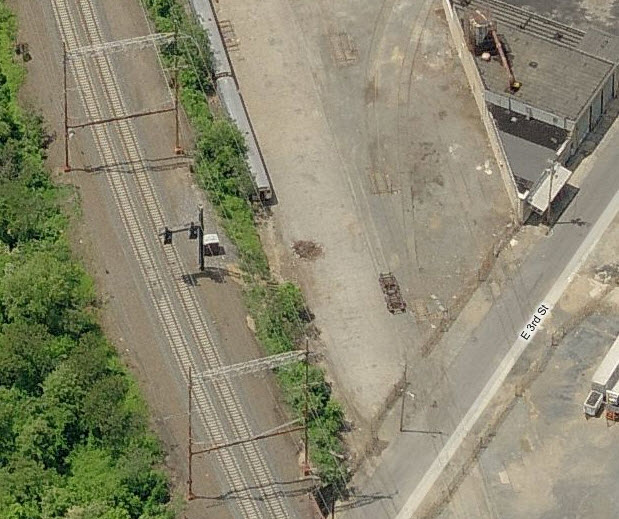RAILFAN GUIDES of the U.S.
Todd's Railfan Guide to
WILMINGTON DE
Downtown
In General
Map
Sites
Signals
Floobydust
RAILFAN GUIDES HOME
RAILROAD SIGNALS HOME
Coming right through the middle of Wilmington is Amtrak's Northeast Corridor, which used to be the Pennsylvania Railroad main passenger line through town. The freight line took a detour around the south and eastern side of Wilmington, track which is now owned by Norfolk Southern since the breakup of Conrail.
In addition to the Amtrak station downtown, you have an old B&O depot a block away from the Amtrak station, DART's bus yards, and Amtrak's NCOC. On the south side of the Christina River, you have the Norfolk Southern's freight line with a wye and a swing bridge. I wouldn't go wandering into the Amtrak Training Center and MOW yard, even tho it is very easy to get in there, as they have their cops all over the place almost all of the time.
Because the trains are elevated on the viaduct, they are not always in good places for pictures. One of the few good places for pictures is from the (still) open fields on the south side of the tracks off Madison Street. Full afternoon sun is the best time. You can have limited success shooting from the north side where the mainline goes over the cross streets. Interesting shots can be had off of Duncan on the west side of the MOW yard where it meets Beech. There is a good spot a little east of here, across from the Wilmington shops that provides access to the NEC without anything in the way.... I'm surprised Amtrak hasn't put up a fence yet.
Any of the crossings are good spots for NS freights coming through, especially from Christiana Ave where they come off the swing bridge.
If you're into such things, there is still plenty of evidence of the Reading's existence in town to chase down.
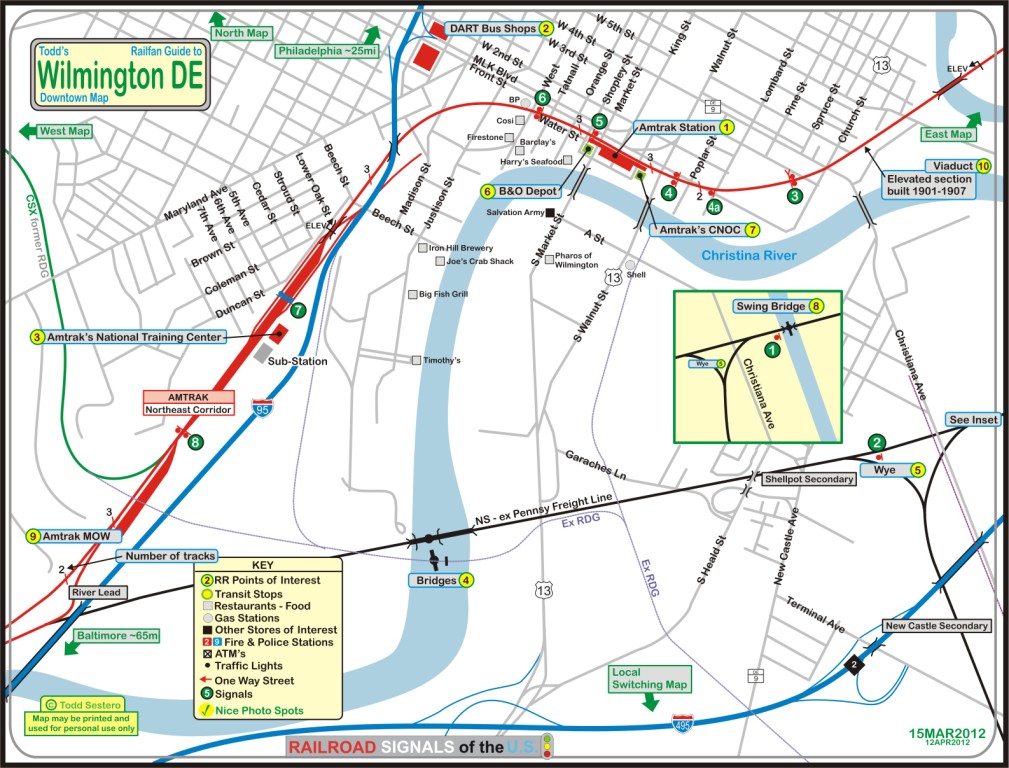
![]() the Amtrak Station
the Amtrak Station
Amtrak's 40th anniversary train on Sunday, April 1st,
2012.
A couple of NB trains coming into the station on the
same day.
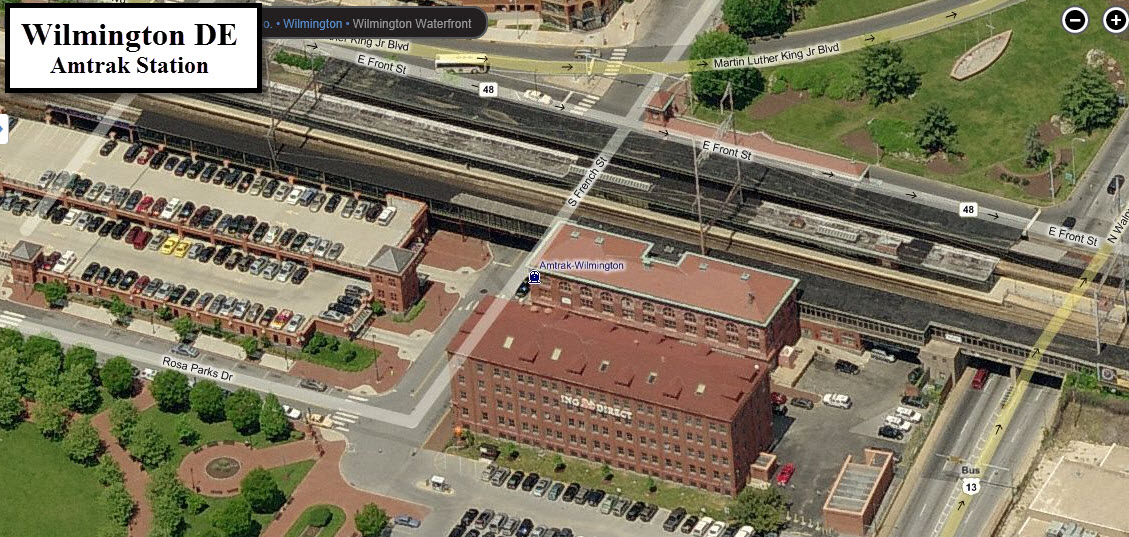
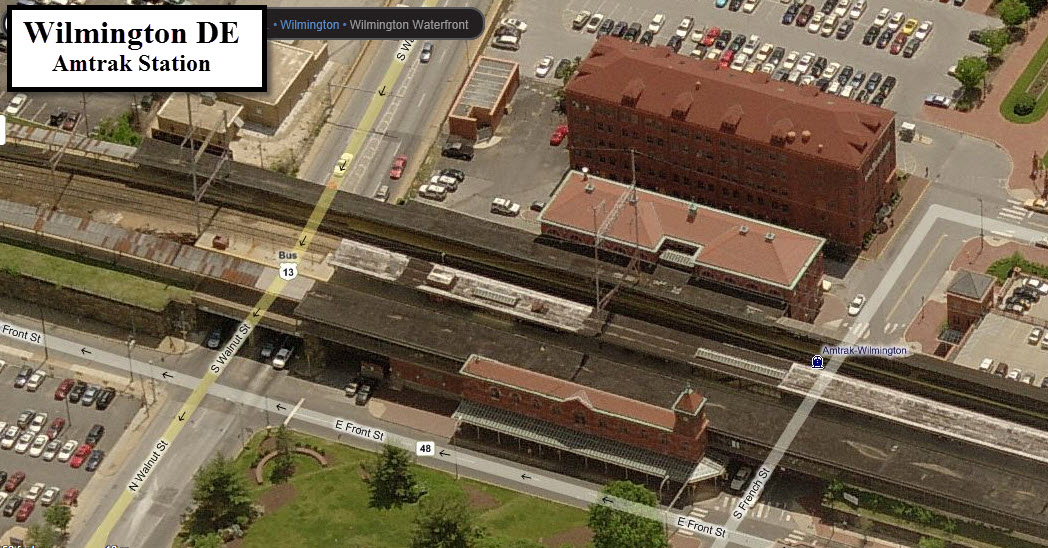
![]() DART Bus Shops
DART Bus Shops
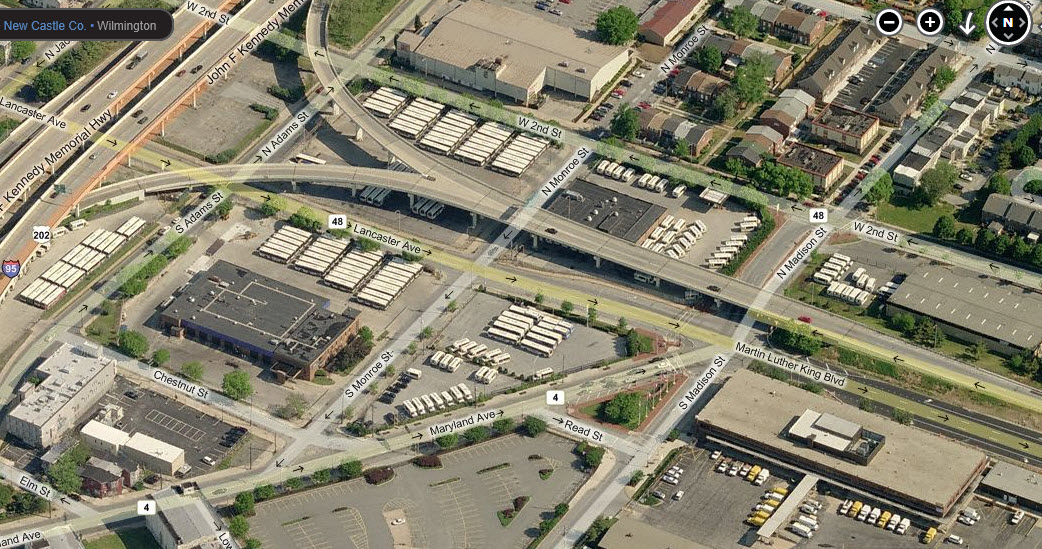
![]() Amtrak's National Training Center
Amtrak's National Training Center
This facility is where Amtrak trains its engineers, and has a state of the art simulator. I wouldn't try going in here, Amtrak cops are all over the place because of the shops and the station. The green line is another Reading track. At the bottom of the picture is a substation, and below that, is a small MOW yard, pictured down at -10-.
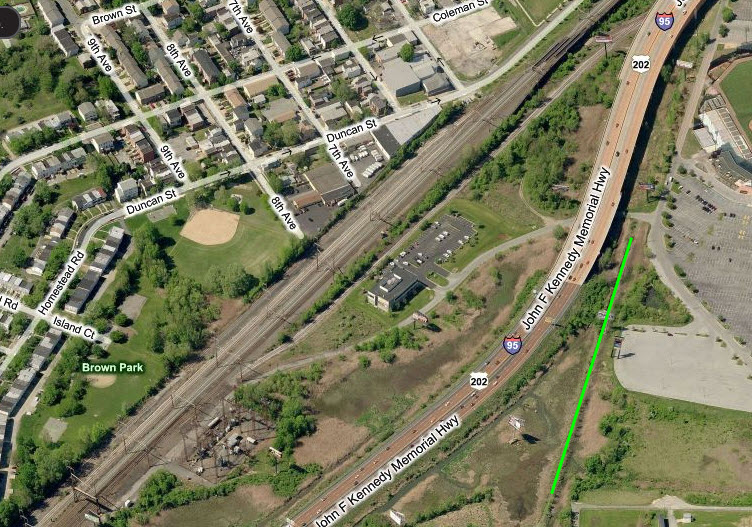
![]() Bridges
Bridges
The track now owned by the Norfolk Southern was the Pennsy's freight line swinging around the south side of Wilmington and used to be double track, including the swing bridge. See the GIF below. There were also numerous Reading RR crossings on this short stretch of track, and was way more signaled than it was now, complete with smashboards at the two river crossings.
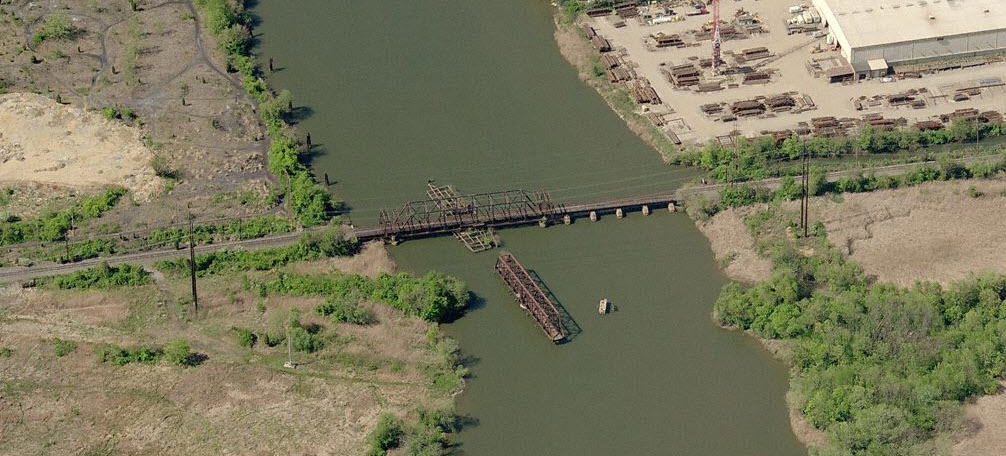
![]() Wye
Wye
Signal locations are shown by the green circles. The south leg of the wye is the New Castle Secondary track. The west to south part of the wye is a relative newcomer, not being on the track plan below from 1962. There is precious little, if any, evidence of the RDG track that used to parallel Christiana Ave.
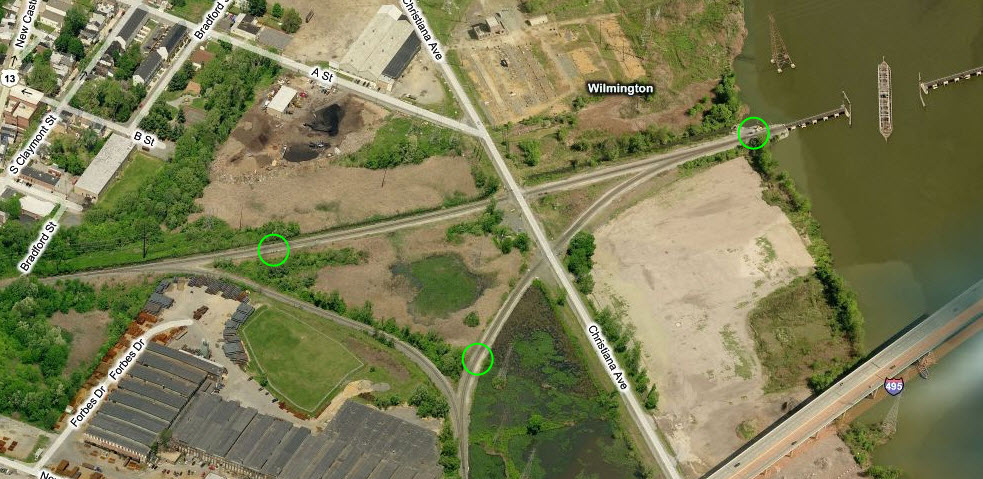

![]() ex B&O Water Street station
ex B&O Water Street station
In the shadow of the PRR's Wilmington Station was the B&O freight/passenger depot. It was on a stub track, not a through track, which may explain why it was never a success in downtown Wilmington as the Pennsy's station was. How many of us have been to downtown Wilmington and passed right by this beautiful building without knowing it's heritage? For many years it sat idle, but not being in the way of anything particular, was left alone. When the bank ING moved into town, they acquired and renovated it. The building became a Capitol 1 property when they bought ING in 2012. The two full size pictures are courtesy Bruce Dunlap. These is a nice market type mini-mall across the street for good eatin.
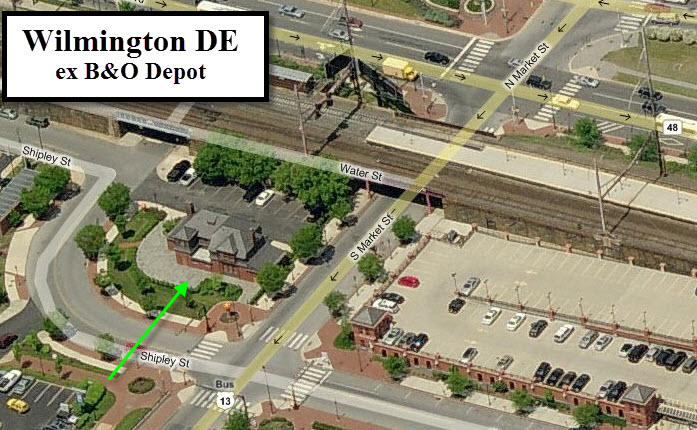
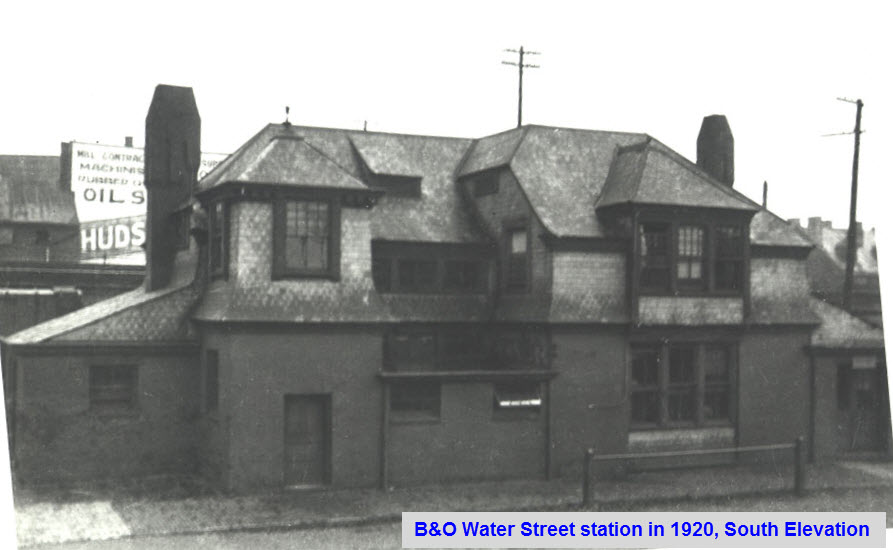
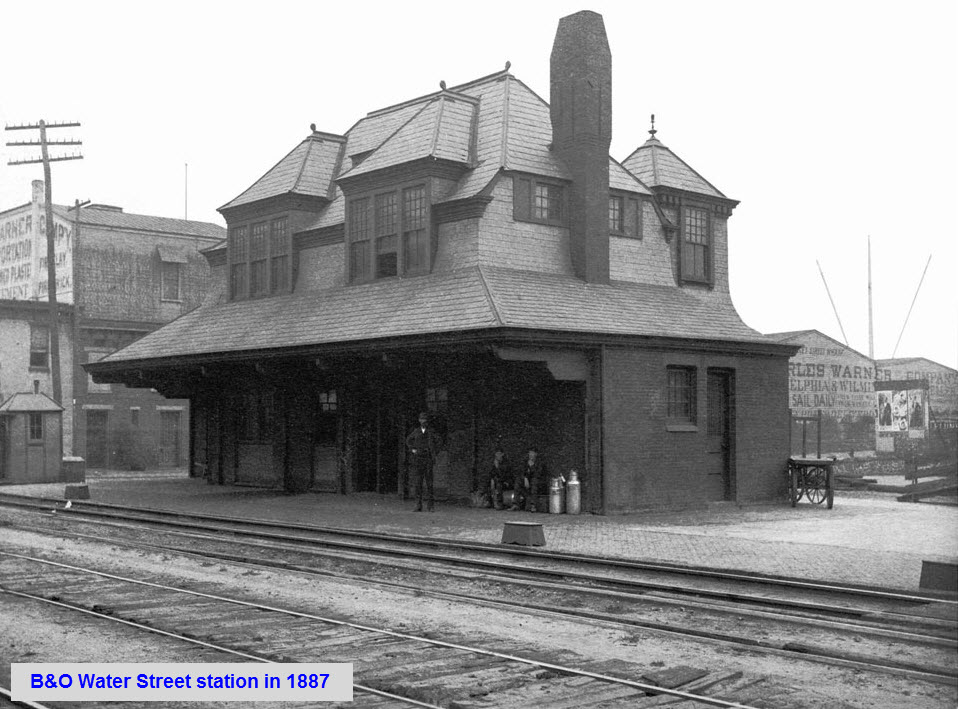
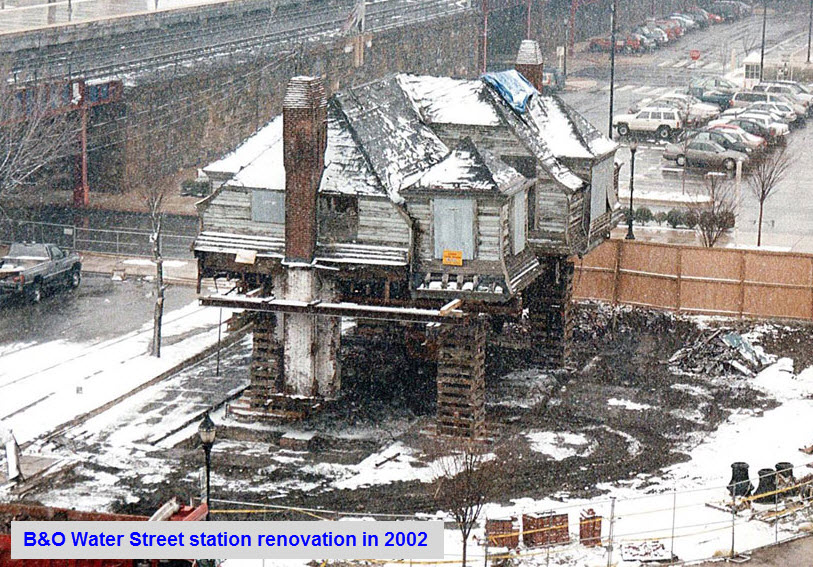
Above 3 pictures
found at: http://www.friendsoffurness.org/pastfuture.html
![]() Amtrak's Consolidated National Operations Center
Amtrak's Consolidated National Operations Center
This is where Amtrak controls everything from.... everything.
![]() Swing Bridge
Swing Bridge
![]() Viaduct
Viaduct
The viaduct the Pennsy made to get into Wilmington on the west side of town had an interesting array of structures for supporting the high voltage lines and the catenary. Here are a few shots of them. Note that they "bend" outwards to give more clearance instead of building the viaduct wider.
The viaduct was built by the Pennsy between 1901 and 1907 at the request of the city, to get the tracks up and away from grade level. Even then, just like now with light rail systems, accidents were commonplace with the high number trains coming through Wilmington, with many fatal.
![]() Amtrak MOW Yard
Amtrak MOW Yard
Below is a picture of what's left of the big yard that used to be here.... MOW stuff is stored here.
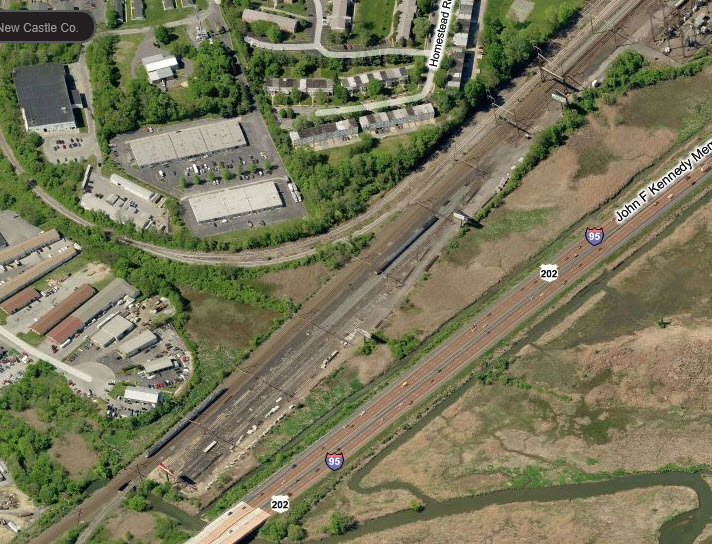
![]() ex B&O Depot
ex B&O Depot
The "real" B&O Depot was located across town from the
downtown area at DuPont St and Delaware Ave. Here are a few pictures
submitted by Bruce Dunlap of Wilmington. The depot was directly on the
B&O mainline between Baltimore and Philadelphia. Many thanks to Mr.
Dunlap for setting me straight. The station was designed by
noted railroad architect Frank Furness, who also designed the Pennsy station
in town. The depot served the B&O when the track was double-tracked in
the 1880's, until 1958. He states that service was better here than at
the Pennsy station, because you were treated like a guest and not baggage.
He believes the station was torn down sometime in the 1960's. You can
see in the aerial shots from Bing and Google that the line used to be
double-tracked at one point.
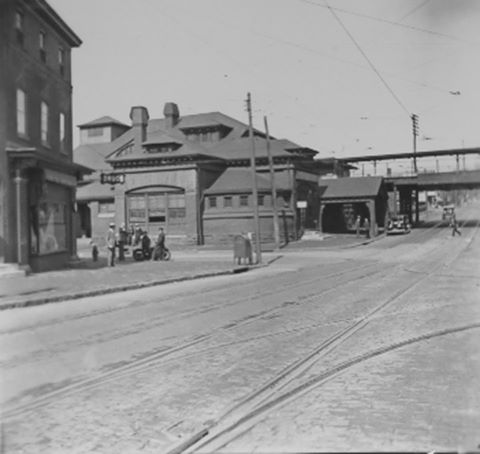 1920's
1920's
1950's
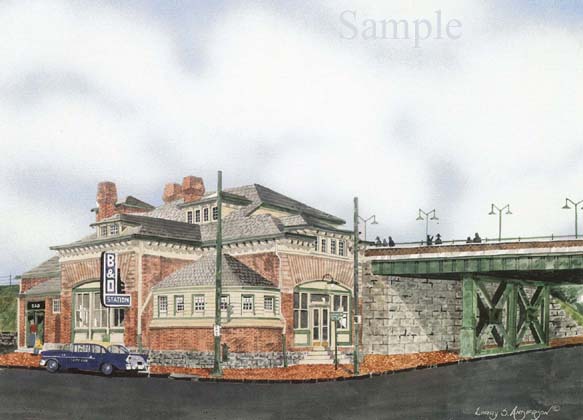 Artist's rendering by Larry Anderson
Artist's rendering by Larry Anderson
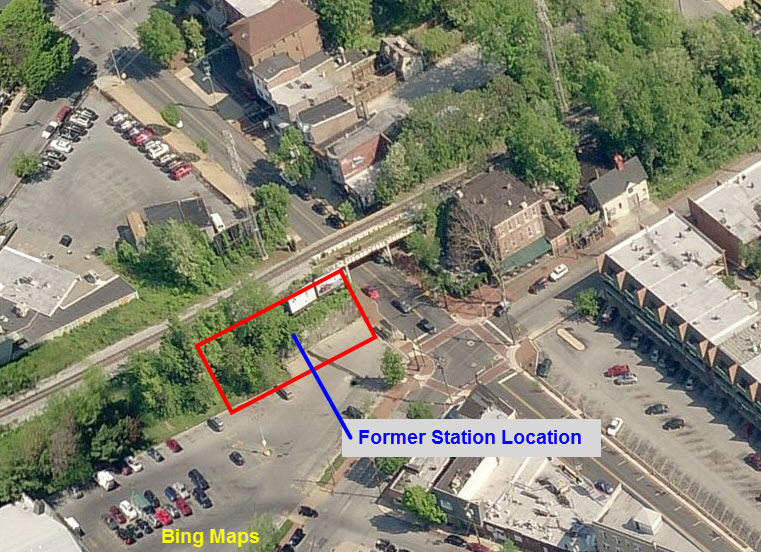
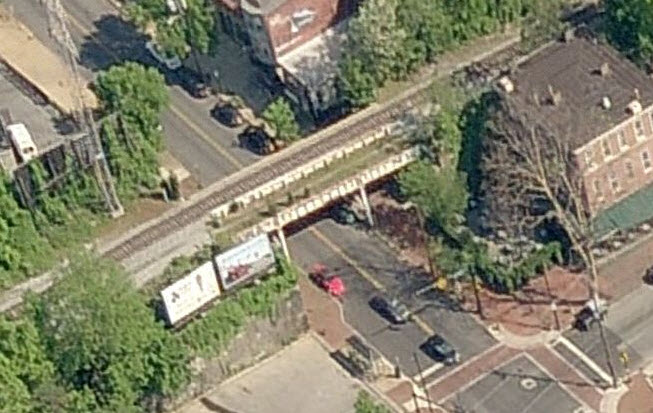
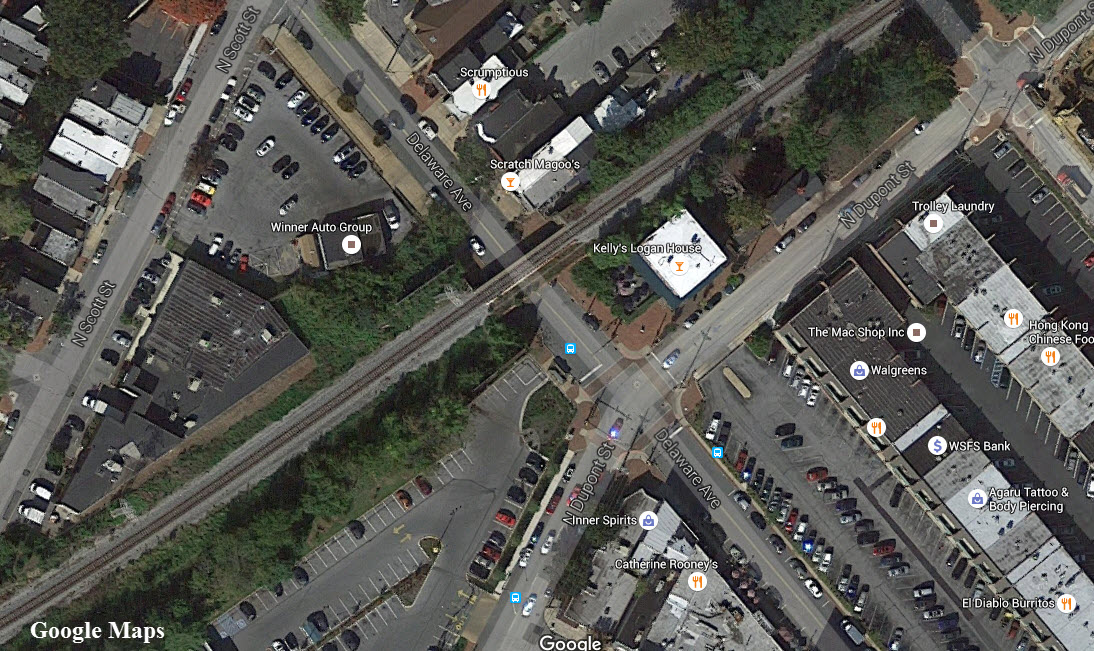
BTW - Kelly's Logan
House pre-dates the B&O depot that used to be across the street, and I'm
told it has always been a great Irish bar!!!
![]() ex PRR, former PB&W Building
ex PRR, former PB&W Building
Located at 112 S. French St right next door to the
Amtrak station, is a building that was designed by Frank Furness - it has
been thoroughly renovated. The building now serves as a cornerstone of
the downtown revival. It was built in 1905-1906 as the headquarters of
the Philadelphia, Wilmington, and Baltimore RR. It was sold by the PRR
in 1968 for a reported $100,000, and sat vacant for many years.
ING bought the building around the turn of the millenium, and in 2002
started leasing space in it. After Capitol One took over
ING in 2012, they no longer needed the building, and looked for a
buyer. Thanks again to Bruce Dunlap for bringing this building to my
attention and it's significance. The Bing aerial shots below give you
a 360 view of the building while it was owned by ING. Below are two
versions of the same article that appeared in Wilmington's
News Journal on 9/13/2014. The one on the right is the current
online version (if you can find it), the other is from when it originally
came out (IMHO, it looks much better).
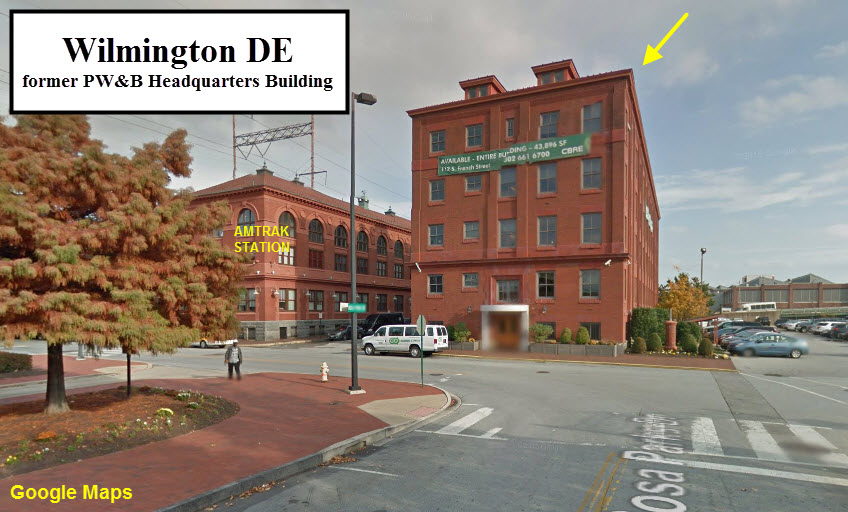
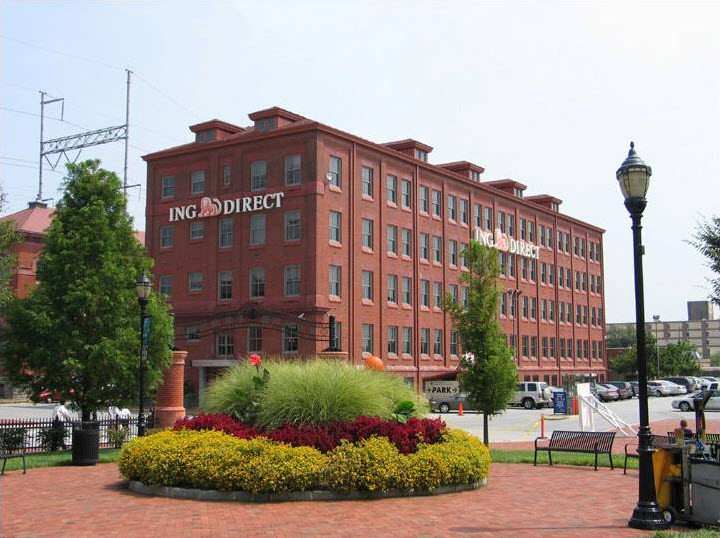
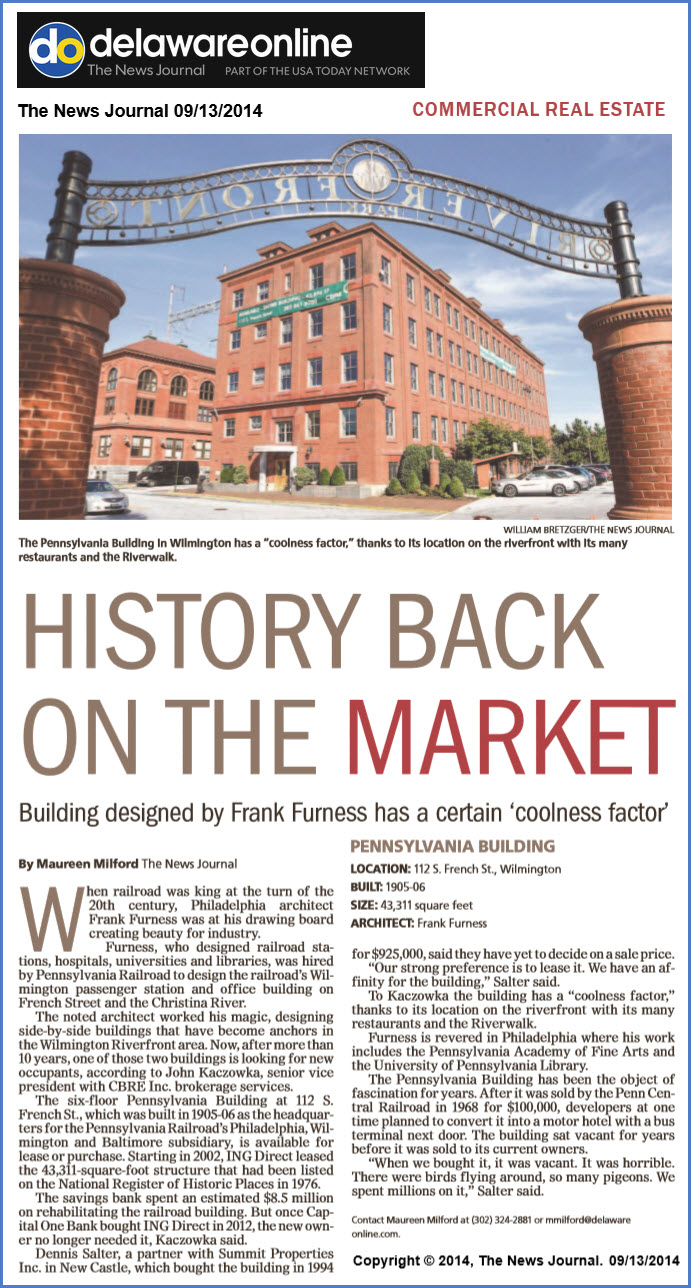
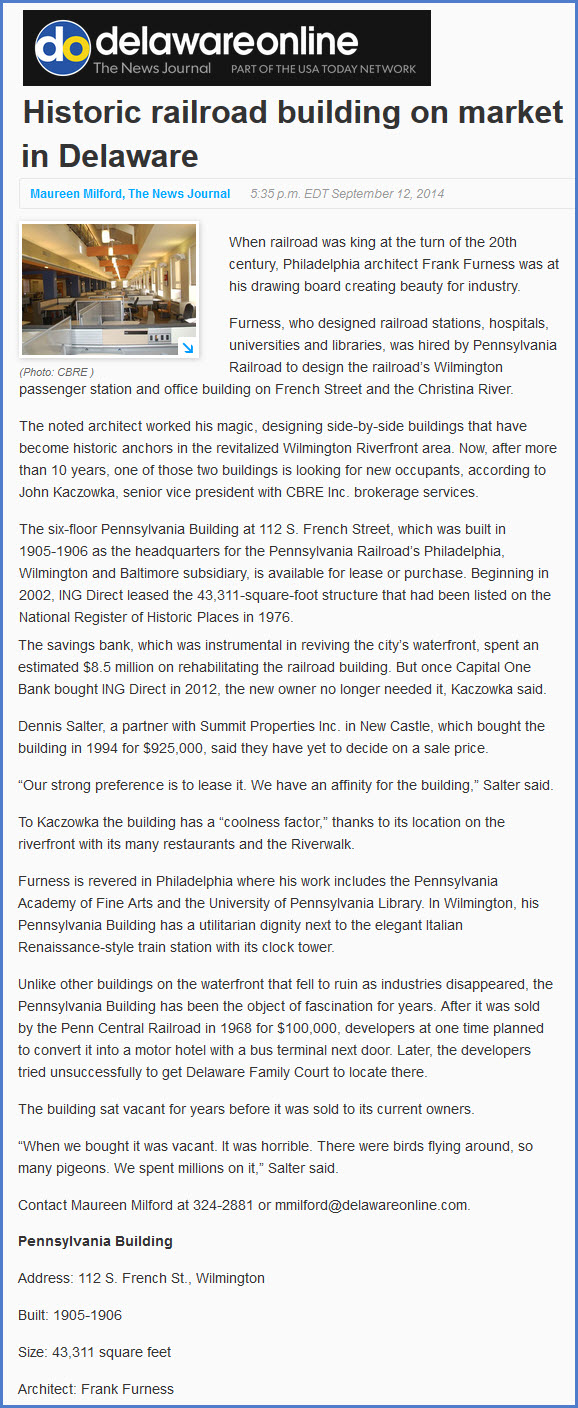
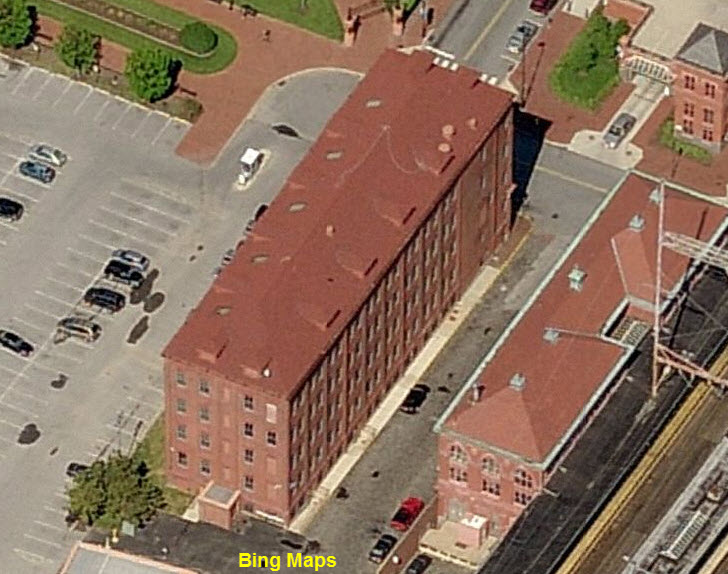
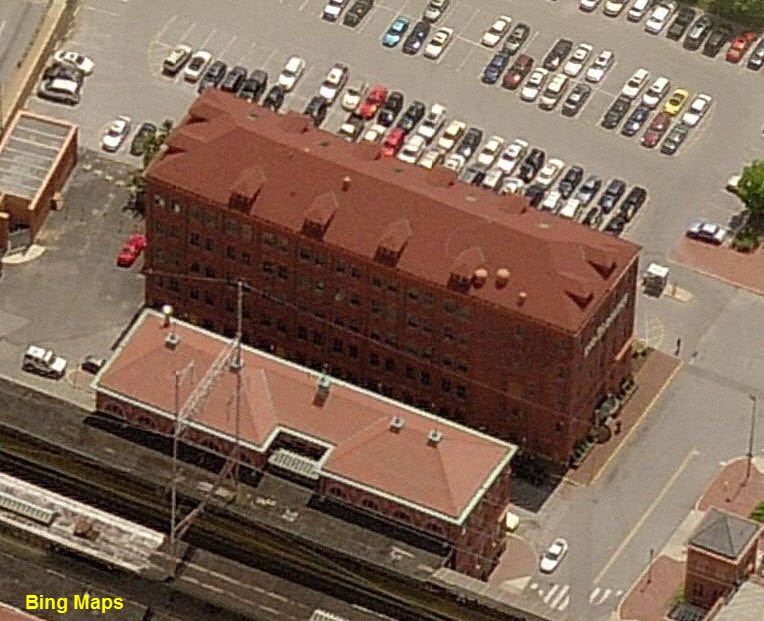
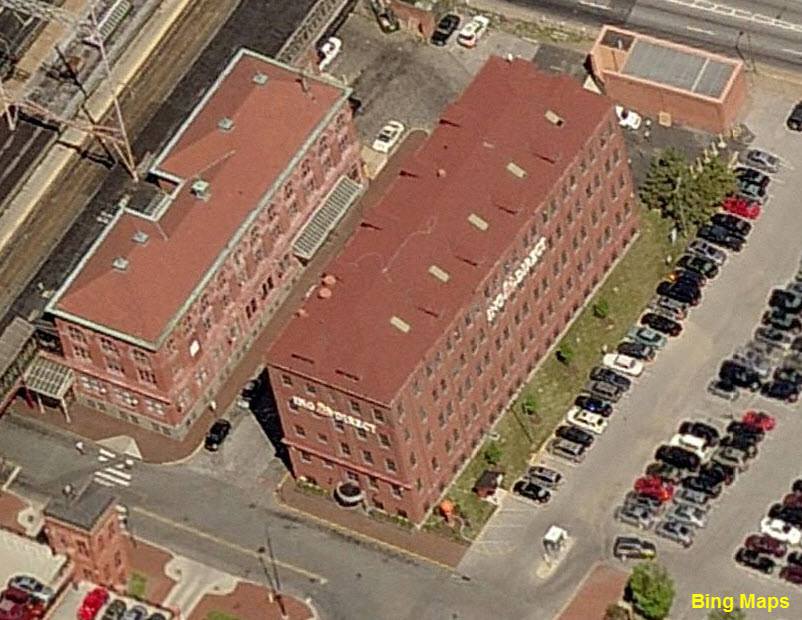
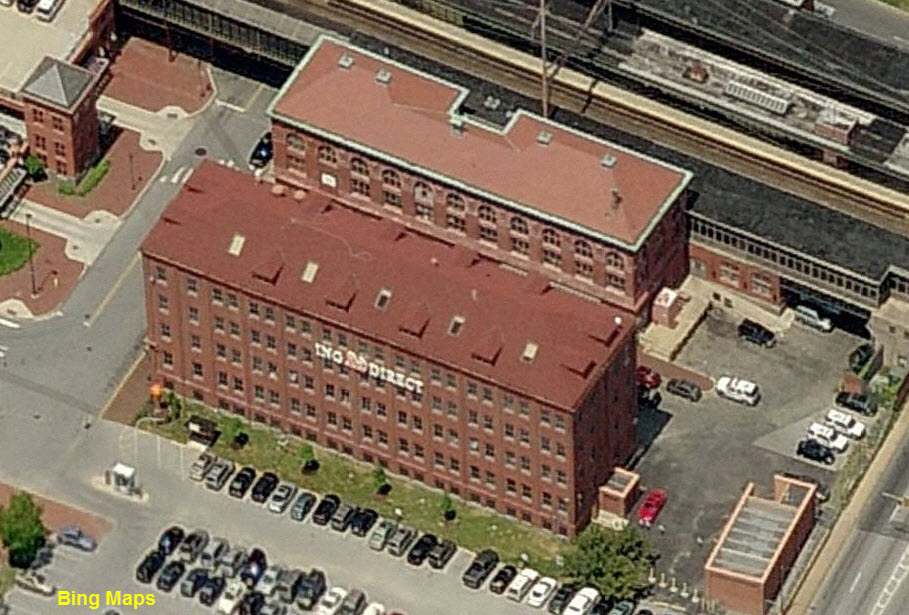
Notice that in many of the Amtrak signals around Wilmington, they have started using LED replacements for the standard incandescent light bulbs.
![]() NS Swing Bridge Signal
NS Swing Bridge Signal
This signal controls movement over the swing bridge.
![]() NS Approach Signals
NS Approach Signals
This wye is not signaled as much as one would think it would be. These signals give advance warning of the signal at the bridge. Southbound trains do not have signals coming through here.
![]() Amtrak SB Signals
Amtrak SB Signals
This is the last set of signals before coming into the station from the north, and can be viewed from 3rd St. These are "fairly new" signals compared to the rest that sit on the catenary supports, for the Pennsy used to have three tracks on the north approach to the station. Sometime during the Penn Central or early Amtrak era, one of the tracks was taken up, and the support pole for these signals sits where that track used to be.
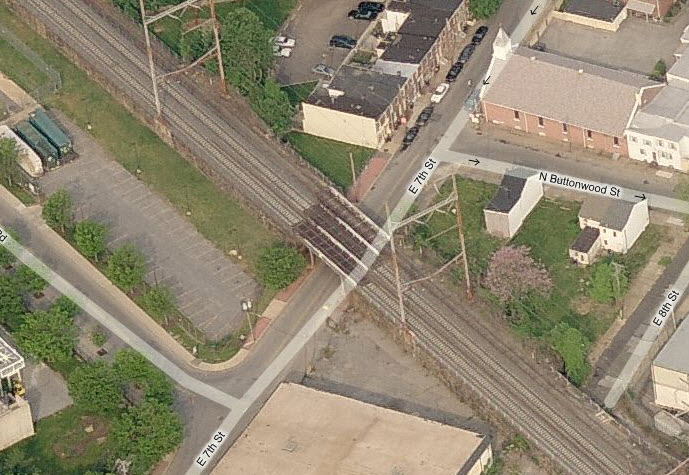
![]() Amtrak NB Pedestal Signals
Amtrak NB Pedestal Signals
These are a unique set of signals because of their placement over a mainline track. Pedestal signals usually reside along side the tracks on a pole about 4 to 8 feet in height depending on visibility requirements. After a discussion on the Yahoo Railway Signaling group, it's been pretty much decided that they were placed here for the same reasons, visibility, over using a standard size set of PL signals. The signals are basically slow speed signals, which is OK, because trains leaving the station are in a slow speed environment. Notice that some of the lenses look whiter than others... that's because they have used LED's in those positions - you can readily see the difference in the two pictures on the right. Also notice that two different styles of housings are used!
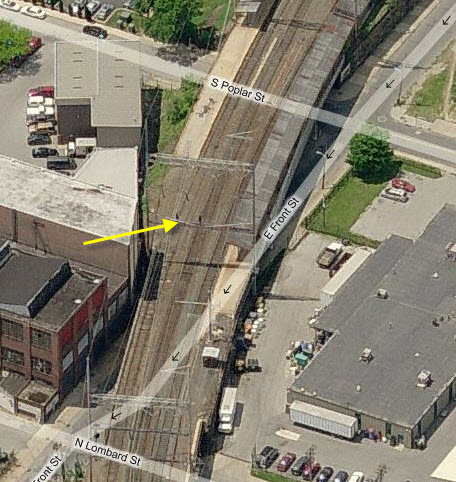
![]() Amtrak NB Signals
Amtrak NB Signals
This is the first full size signal coming NB out of the station. The signal is not mounted overhead as the rest of the are, it sits off to the side on it's own making it again, fairly unique in the area. The signal can just be seen in the above photo, just above "Lombard St".
![]() Amtrak SB Signals
Amtrak SB Signals
These signals are at the exit of the station for trains heading towards Washington DC.
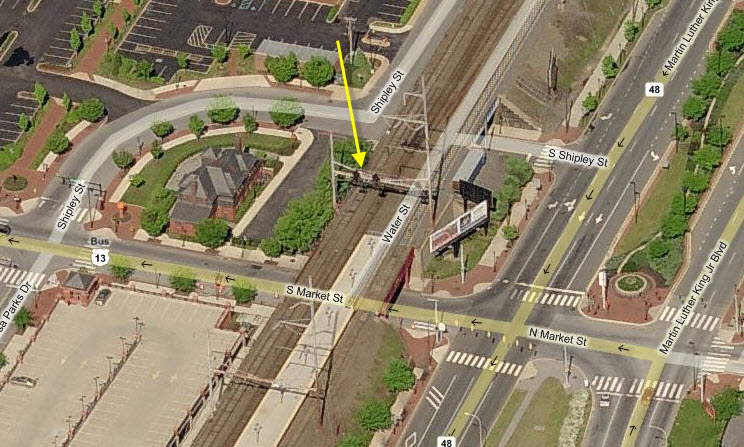
Between the signals at 5 and 6 is this unused signal mounting.
6 Amtrak NB Signals
These are the last NB signals before getting into the station. The last picture on the right is looking towards the station.
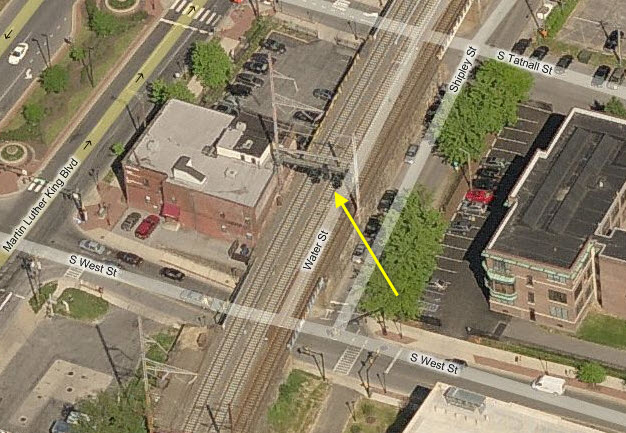
7 Amtrak SB Signals
The First Pennsylvania RR Depot
The first Pennsylvania Railroad depot in town was at grade
level along with the tracks. Because of this, and the frequency of
trains, there were a lot of
accidents and deaths. For the longest time, the city of Wilmington
tried to get the railroad to do something about "it". Finally, in
1901, the Pennsy built a four mile long grade separated viaduct through
downtown Wilmington - it was completed in 1907.
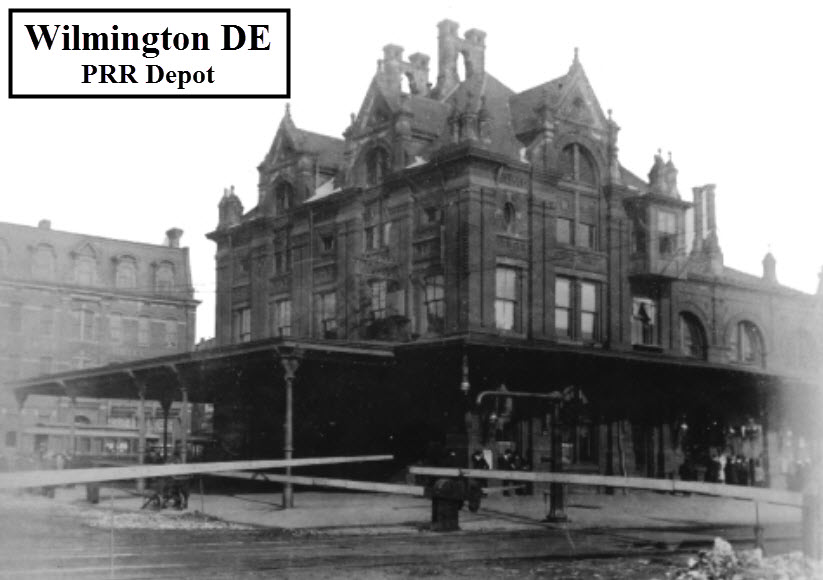
The Reading RR
Some evidence of the Readings trackage and right-of-ways
can still be seen from the air, as the Snags below show. The upper
photo is a continuation of the one beneath it, and shows that the tracks
went all the way up to the river.
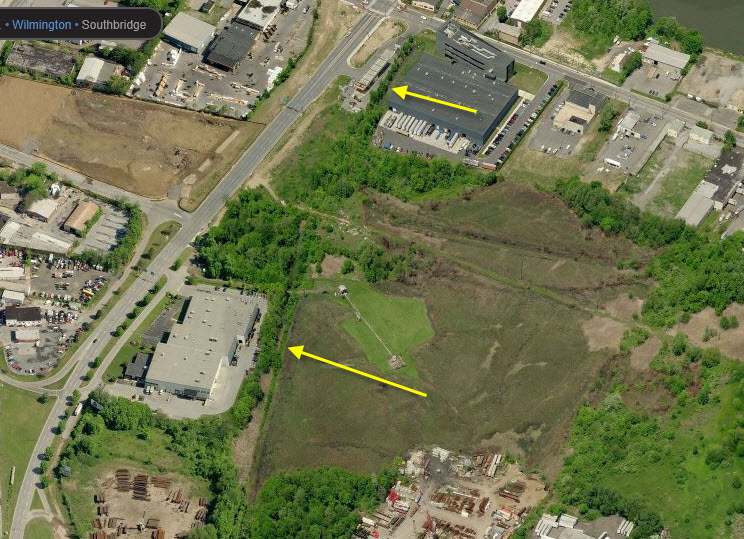
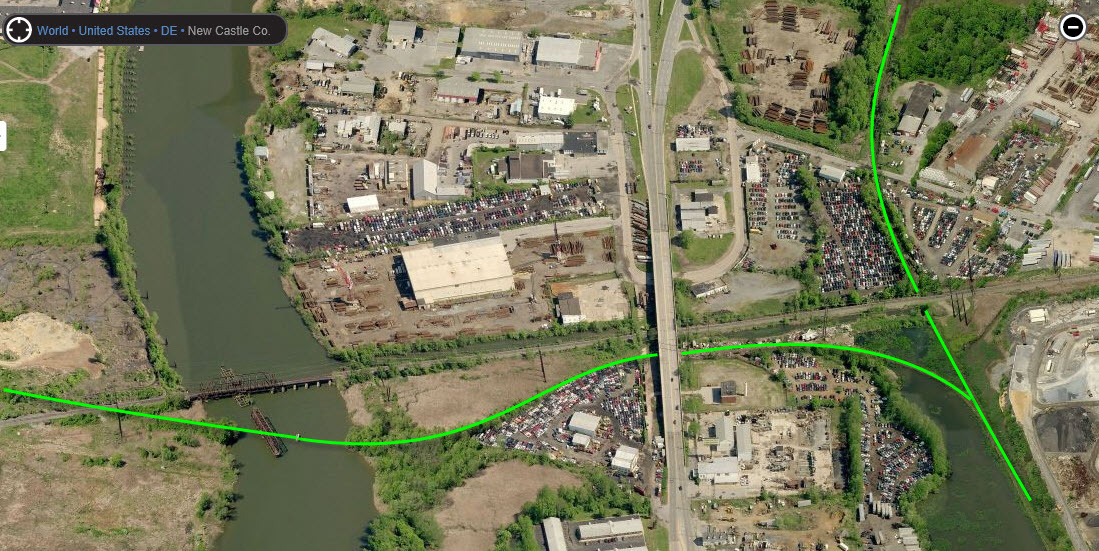
2008-0413a
NEW 03/17/2012
Last Modified
05-May-2016
